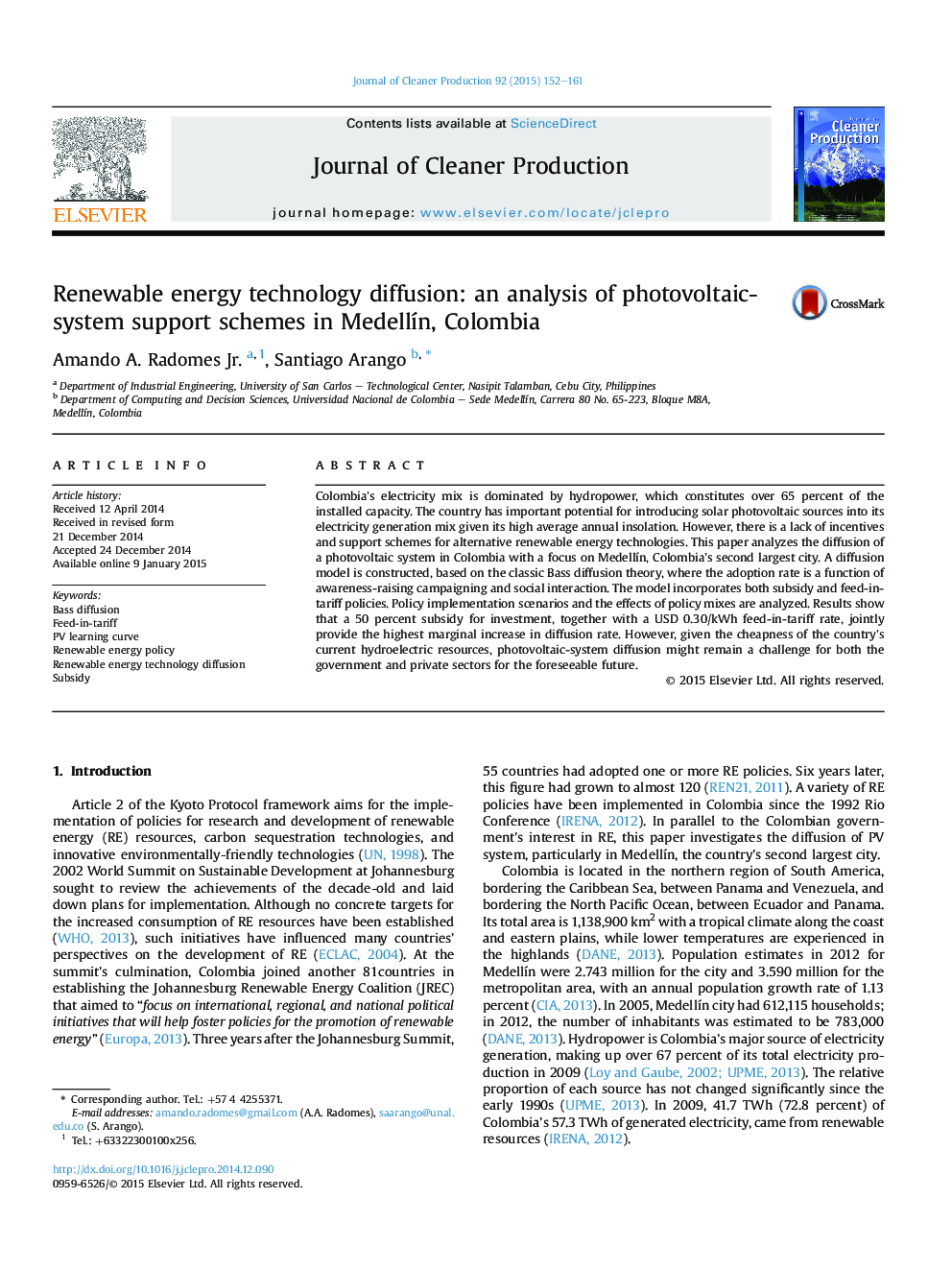| Article ID | Journal | Published Year | Pages | File Type |
|---|---|---|---|---|
| 1744630 | Journal of Cleaner Production | 2015 | 10 Pages |
•Colombia has important potential for introducing solar photovoltaic sources.•The diffusion of a photovoltaic system in Medellín, Colombia is analyzed using a simulation model.•The model is based on the Bass diffusion theory and incorporates subsidy and feed-in-tariff policies.•A combination of both policies is desired.•The diffusion is still challenging because of the low-cost hydro power supply.
Colombia's electricity mix is dominated by hydropower, which constitutes over 65 percent of the installed capacity. The country has important potential for introducing solar photovoltaic sources into its electricity generation mix given its high average annual insolation. However, there is a lack of incentives and support schemes for alternative renewable energy technologies. This paper analyzes the diffusion of a photovoltaic system in Colombia with a focus on Medellín, Colombia's second largest city. A diffusion model is constructed, based on the classic Bass diffusion theory, where the adoption rate is a function of awareness-raising campaigning and social interaction. The model incorporates both subsidy and feed-in-tariff policies. Policy implementation scenarios and the effects of policy mixes are analyzed. Results show that a 50 percent subsidy for investment, together with a USD 0.30/kWh feed-in-tariff rate, jointly provide the highest marginal increase in diffusion rate. However, given the cheapness of the country's current hydroelectric resources, photovoltaic-system diffusion might remain a challenge for both the government and private sectors for the foreseeable future.
